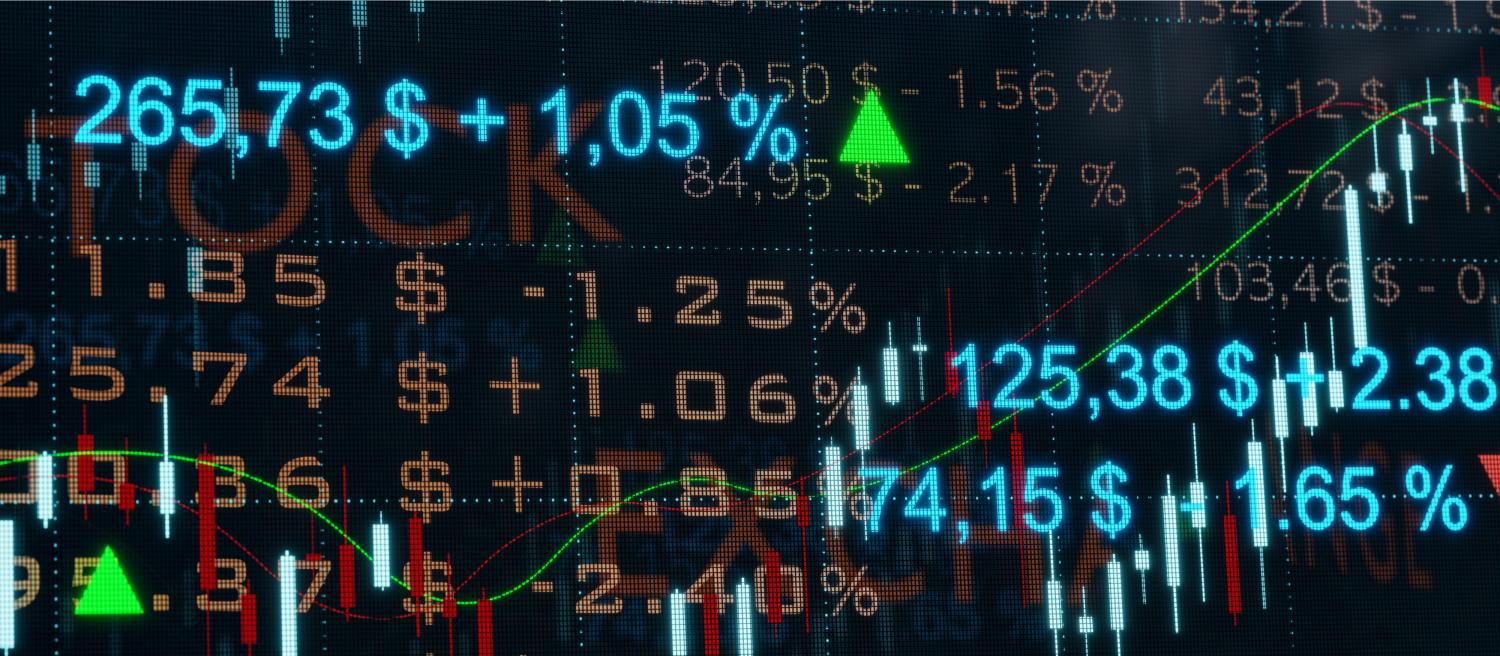When online markets first emerged, there was widespread optimism that they would be fair and competitive. Unlike physical stores, consumers would be able to choose among dozens, perhaps hundreds, of websites with simply a click. This would drive intense competition to offer the lowest price, making markets more efficient and benefiting consumers.
It is now clear that the promises of online markets have only been partially realized. A few retailers dominate online markets. In some cases, online prices are slightly lower than in physical stores, but not always.1 Moreover, the price of a product can vary widely across online retailers. Prices on websites such as Amazon can fluctuate over the course of a day and are sometimes significantly higher than the suggested retail price. Clearly, online markets are not as competitive as some initially thought.
Retailers in online markets increasingly use pricing algorithms. Rather than a human setting prices, a computer program can quickly monitor market conditions, including behavior of rival retailers, and autonomously adjust prices in near real-time. The fact that these developments have happened in tandem—more responsive pricing behavior, along with large price differences that consumers might pay for identical products—runs counter to the initial expectations about competition in online markets. Shouldn’t more responsive pricing lead to greater competition?
This article reviews recent work examining pricing strategies of major online retailers and the potential effects of pricing algorithms. We describe how pricing algorithms can lead to higher prices in a number of ways, even if some characteristics of these algorithms may appear, at first glance, to increase competition. A key feature of many pricing algorithms is that they automatically react to rivals’ prices. Some have argued that this could facilitate collusion. However, this feature can also soften price competition when rivals do not collude. Even very simple pricing algorithms can raise prices. Finally, we discuss potential policy responses to encourage competition in online retail and other markets with pricing algorithms.
The competitive effects of algorithms are increasingly important given that online sales have surpassed $4 trillion worldwide and continue to grow rapidly. In addition to online markets, pricing algorithms are now being used to set prices for gas stations, airline tickets, hotels, entertainment, and ride sharing. The competitive effects of pricing algorithms will become only more important as they are increasingly adopted in a wide array of markets.
What is a pricing algorithm?
At a high level, a pricing algorithm is a computer program that autonomously adjusts prices based on current and past data related to demand, cost, or rivals’ prices. Initially, algorithms were used in only a few industries, such as airline ticket pricing. With the rise of online markets, there has been a sea change in terms of the number of markets affected by the adoption of algorithms, and there have been major investments to improve pricing algorithms along several dimensions.
There are a variety of hypotheses about the effects of pricing algorithms. Economists largely agree that algorithms that adjust prices based on demand conditions and/or costs have the potential to increase efficiency. However, there is growing concern that other aspects of pricing algorithms could reduce competition and increase prices.
Because pricing algorithms act without human intervention, algorithmic pricing has two key features that distinguish it from traditional methods where prices are set manually by a pricing manager or analyst. First, algorithms can allow retailers to set prices based on rules that are encoded by software. The rules can be fixed, or they can adjust over time based on, for example, machine learning protocols or human intervention. The fact that firms can commit to these rules in the short run can have important implications for competition and prices, as we discuss below.
Second, because computers can perform intensive calculations quickly, algorithms can incorporate more information and make changes faster than traditional pricing methods. Often, retailers set up their algorithms to run at regular intervals—once per day or once per hour—to update prices based on information that arrives at a high frequency. Information that may lead to a price change includes recent sales, inventories, or external features such as weather forecasts. The ability to adapt to rapidly changing conditions is what gives algorithms the potential to provide goods more efficiently than traditional pricing.
Algorithms may also take into account the prices that rival retailers charge for the same or similar products. This type of information is somewhat special, as it reflects the nature of competition rather than only supply and demand conditions. Because algorithms can perform automated responses to new information, retailers that monitor rivals’ websites can quickly respond to any price changes. This feature is commonly offered by third-party pricing tools for sellers on major platforms, and it allows even small sellers to automatically adjust prices based on competitor prices. As we describe below, high-speed automated pricing of this form can give retailers a competitive advantage.
Evidence from major online retailers
In recent work, we collect hourly data from major online retailers such as Amazon, Walmart.com, and Target.com to provide evidence on their pricing strategies. Many retailers have invested heavily in pricing technology that updates prices at high speed. We find that the most sophisticated retailers can adjust prices within an hour. Importantly, we document that the retailers with the fastest pricing also appear to have algorithms that autonomously respond to price changes by rivals. Finally, we show that there is a persistent relationship between prices and the speed that online retailers can adjust prices: The retailers with faster pricing have lower prices.2
Research in other settings has documented related facts. Third-party sellers on Amazon will often employ simple pricing rules such as matching or undercutting a rival.3 Gas stations are also adopting pricing algorithms, allowing them to quickly adjust prices in response to competitors.4 Similar evidence has also been documented for online grocery stores.5
Why simple pricing algorithms could raise prices
The evidence we have collected highlights how some online retailers automate the collection of rival’s prices and employ algorithms that quickly respond to rivals. This practice tends to be easier in online markets, where prices are publicly displayed and easy to access.
To see why this practice could lead to higher prices, it is helpful to start with a simple example. Consider a retailer that programs a pricing rule that quickly undercuts a rival’s price by $3. Because the rule is enforced by a computer, the retailer can tie its hands to this strategy, regardless of the price chosen by its rival. For this example, suppose the competitive price level without algorithms is $15.
One might intuitively think that a commitment to undercut a rival’s price would lead to lower prices. However, economic theory says the opposite. Why? If a slower online retailer knows that their rival is using this pricing rule, they have less incentive to lower their own price. When the slower retailer chooses the competitive price of $15, the faster rival instantly responds by setting a price of $12. The slower retailer would not be content with this arrangement, as it is losing market share to its rival even at the “competitive” price. With traditional pricing, the slower retailer may be incentivized to lower its price in response. However, because the pricing algorithm enables the faster rival to immediately respond to a price cut, the slower retailer has no incentive to respond.
Instead, the slower retailer picks the price that will maximize its profits while recognizing the response of the faster rival, i.e., a $3 price difference. In typical cases, this will lead to prices that are higher than the competitive price levels for both firms—say, $20 for the slower retailer and $17 for the faster rival. Notice that, without understanding the competitive dynamics, it might appear that the faster retailer is competing aggressively, since it has lower prices and responds quickly. However, instead of yielding lower prices, the automated response of the pricing algorithm leads to higher prices for all consumers.
In effect, a retailer wielding a high-speed pricing algorithm can threaten to quickly undercut the price of a rival. The slower rival is then forced to acquiesce and set higher prices given the threat of the rival’s automated algorithm. The faster the algorithm can respond, the less incentive the slow firm has to undercut the fast firm’s price since the gain in share (and profits) from a price cut will be short-lived.
More sophisticated algorithms
In practice, online retailers may use more complicated pricing algorithms. In some cases, pricing algorithms may lead to cycling of prices, whereby algorithms undercut rival prices until prices get so low that they reset to a higher price. Recent work examines cycling of prices in online markets and retail gasoline caused by algorithms and argues that algorithms of this form can also lead to higher prices.6
Currently, there is a wide variety of pricing strategies offered by algorithms, from the simple to the sophisticated. Given the variety in possible strategies, what will retailers end up using as markets evolve? We address this question by studying what rules retailers would choose to employ if all competitors had high-frequency, autonomous algorithms. We use economic theory and numerical simulations to show that retailers can choose very simple rules that yield higher prices for all retailers—even equivalent to the collusive price levels.
As discussed above, retailers may also employ algorithms that adjust the rules over time. For example, algorithms may use reinforcement learning to determine which prices yield the highest payoffs. These features may also change the nature of competition and can also lead to higher prices. One concern has been that these types of pricing algorithms may learn how to collude without human input. Simulations show that collusion can theoretically be achieved in this way.7
There is some debate over to what extent such collusion would happen in practice. In some respects, the algorithms that learn to collude are unsophisticated. Collusive-like outcomes arise with learning algorithms when firms are unaware that other firms may also be running pricing experiments.8 Other work has shown that giving learning algorithms simple heuristics, such as knowing that lower prices lead to higher shares, eliminates the possibility of collusion in this context.[9]
There is also the important question of what learning rules firms would choose, knowing all of these possibilities. Would firms opt to choose a sophisticated algorithm if rival algorithms were unsophisticated? The academic literature has not yet answered this question.
How to ensure competition in markets with pricing algorithms
Currently, pricing algorithms are opaque. More transparency about the data and algorithms that are used to set prices would allow policy makers and researchers more insight into whether these algorithms are anti-competitive. As even simple pricing rules can yield prices above the competitive level despite initially appearing innocuous, policing the precise nature of algorithms and their outcomes would be extremely difficult without more information about algorithms used in practice.
Given concerns that algorithms could collude, antitrust authorities should be attentive to retailers that appear to be setting prices in unison. However, even in the absence of full collusion, pricing algorithms could reduce the incentive to lower prices if online retailers know that their rivals will instantly adjust prices in response. One approach is to limit the ability of firms to set prices based on rival’s prices while continuing to allow pricing algorithms that adjust prices based on other factors, such as shifts in demand. Enforcement of such a rule would require more transparency into the algorithms firms use to set prices, while at the same time affording the firms some intellectual property protection for innovations in how algorithms respond to other factors.
Another possibility is to limit the frequency at which firms adjust prices. If firms can only set prices once per week, for example, this would limit the consequences of firms reacting to price changes at a high frequency. A downside of such an approach is that this eliminates the ability of firms to react to rapidly changing market conditions, and firms may transfer some of this risk to consumers by increasing average prices. But if this change yields lower prices by changing the nature of competition, it may be an outcome that consumers prefer.
The possibilities discussed above focus on key features of the algorithms that can lead to higher prices: differences in pricing frequencies and automated reactions to rivals’ price changes. Other proposed policy solutions tackle the outcomes of algorithmic pricing (i.e., prices that are too high) rather than the processes, either through antitrust enforcement or price controls. These approaches have serious challenges. Traditional antitrust enforcement measures do not apply in some cases where algorithms have increased prices, including the example discussed above. Price controls are generally not supported by economists as they require the extremely difficult task of determining the “right” price. Overall, empowering a government agency to broadly set prices in markets affected by algorithms may do more harm than good.9
Finally, some have advocated that equipping consumers with algorithms may be one way to fight against potential anti-competitive effects of pricing algorithms.10 In practice, consumer shopping algorithms—essentially sophisticated price-comparison tools—could work by making it easier for consumers to always choose the retailer with the lowest price. However, the success of such algorithms would require consumers to care enough about potential price differences across websites to adopt these tools in large numbers. Technological advances along these lines could change the effects of pricing algorithms in the years to come.
The authors did not receive financial support from any firm or person for this article. The authors have received a research grant from the Economic Security Project, a nonprofit organization established to fund research related to antitrust issues and related policy issues. Other than the aforementioned, the authors did not receive support from any firm or person with a financial or political interest in this article. The authors are not currently an officer, director, or board member of any organization with a financial or political interest in this article.
-
Footnotes
- Cavallo, Alberto. “Are online and offline prices similar? Evidence from large multi-channel retailers.” American Economic Review, 107, no. 1 (2017): 283-303. https://doi.org/10.1257/aer.20160542.
- Brown, Zach, and Alexander MacKay. “Competition in Pricing Algorithms.” American Economic Journal: Microeconomics, forthcoming.
- Chen, Le, Alan Mislove and Christo Wilson. “An Empirical Analysis of Algorithmic Pricing on Amazon Marketplace.” Proceedings of the 25th International Conference on World Wide Web, (April 2016): 1339-1349. https://doi.org/10.1145/2872427.2883089. Musolff, Leon. “Algorithmic Pricing Facilitates Tacit Collusion: Evidence from E-Commerce.” Working paper, 2016. https://lmusolff.github.io/papers/Algorithmic_Pricing.pdf.
- Assad, Stephanie, Robert Clark, Daniel Ershov and Lei Xu. “Algorithmic Pricing and Competition: Empirical Evidence from the German Retail Gasoline Market.” Working paper, August 28, 2020. https://papers.ssrn.com/sol3/papers.cfm?abstract_id=3682021.
- Aparicio, Diego, Zachary Metzman and Roberto Rigobon. “The Pricing Strategies of Online Grocery Retailers.” NBER working paper, April 2021. https://www.nber.org/papers/w28639.
- Leisten, Matthew. “Algorithmic Competition, with Humans.” Working paper, 2022. https://www.researchgate.net/publication/349681786_Algorithmic_Competition_with_Humans. Musolff, supra.
- Calvano, Emilio, Giacomo Calzolari, Vincezo Denicolo and Sergio Pastorello. “Artificial Intelligence, Algorithmic Pricing, and Collusion.” American Economic Review 110, no. 10 (2020): 3267-97. https://doi.org/10.1257/aer.20190623. Klein, Timo. “Autonomous Algorithmic Collusion: Q‐Learning Under Sequential Pricing.” The RAND Journal of Economics 52, no. 3 (2021): 538-558. https://doi.org/10.1111/1756-2171.12383. Calvano, Emilio, Giacomo Calzolari, Vincenzo Denicolò, Joseph E. Harrington Jr and Sergio Pastorello. “Protecting Consumers from Collusive Prices Due to AI.” Science 370, no. 6520 (2020): 1040-1042. http://doi.org/10.1126/science.abe3796.
- Hansen, Karston T., Kanishka Misra and Mallesh M. Pai. “Frontiers: Algorithmic Collusion: Supra-competitive Prices via Independent Algorithms.” Marketing Science 40, no. 1 (2021): pp. 1-12. https://doi.org/10.1287/mksc.2020.1276. Banchio, Martino and Giacomo Mantegazza. “Games of Artificial Intelligence: A Continuous-Time Approach.” Working paper, 2022. https://doi.org/10.48550/arXiv.2202.05946.
- Alexander J. MacKay and Samuel Weinstein. “Dynamic Pricing, Consumer Harm, and Regulatory Response.” Harvard Business School working paper, 2022. https://www.hbs.edu/ris/Publication%20Files/22-050_ec28aaca-2b94-477f-84e6-e8b58428ba43.pdf.
- Michal Gal. “Limiting Algorithmic Cartels.” Berkeley Technology Law Journal, forthcoming. https://papers.ssrn.com/sol3/papers.cfm?abstract_id=4063081.








